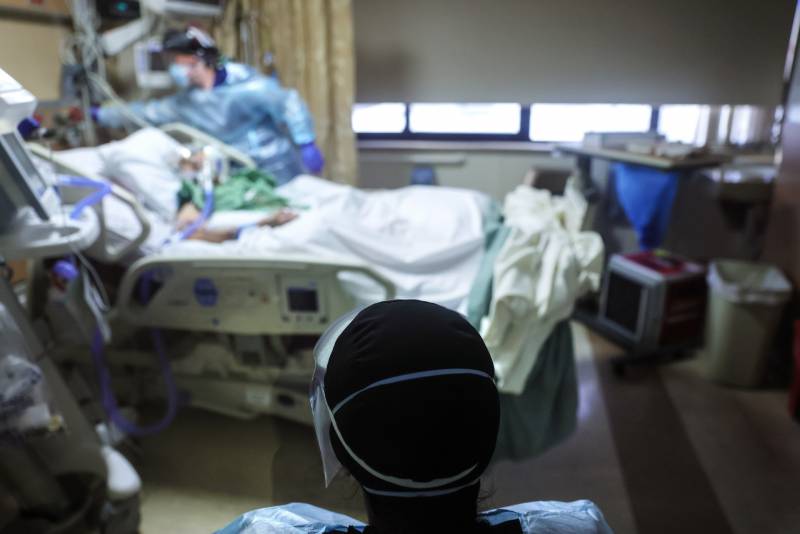The winter COVID-19 surge not only strained hospital capacity to the breaking point, it exhausted and demoralized health care workers. So we checked back in with one doctor and one nurse to see how things were going now that cases and hospitalizations have been falling.
UCSF nurse Jamille Cabacungan says she she was extremely busy during the surge tending to people sick with COVID-19. Now, she says there are far fewer patients with the virus, but she’s still got a lot of work due to all those elective procedures that were put on hold and are now being attended to.
"You know, those were all delayed during the pandemic," she said. "And now, like, the floodgates are open. It’s just this continuous flow of patients, like we’re just not catching a breath."
Cabacungan says the pandemic exposed staffing shortages, something the union she belongs to, the California Nurses Association, has been advocating to fix.
She says UCSF has hired some temporary nurses and is working to bring on more staff. But they can’t come soon enough, she says, as burnout is still a big issue.
Dr. Paul Silka, who heads the emergency department at Regional Medical Center in East San Jose, says the delay of all those elective procedures could wind up causing "collateral damage" from the COVID-19 crisis.
"Not the people who got sick or not the people who had complications from COVID-19," he said, but "those things done that were elective at one time and now have become more acute."
Silka says the instability brought about by the pandemic has taken a toll. In January, ambulances were backed up outside the facility, waiting sometimes for hours to drop off patients.
Now, the number of patients is down significantly, Silka says, which has created a kind of professional whiplash for the staff, who have gone from overdrive to eerie quiet.
"We’re sending some folks home (or) having them not come in," he said.
Meanwhile, he and his staff are preparing for the possibility of yet another surge.

